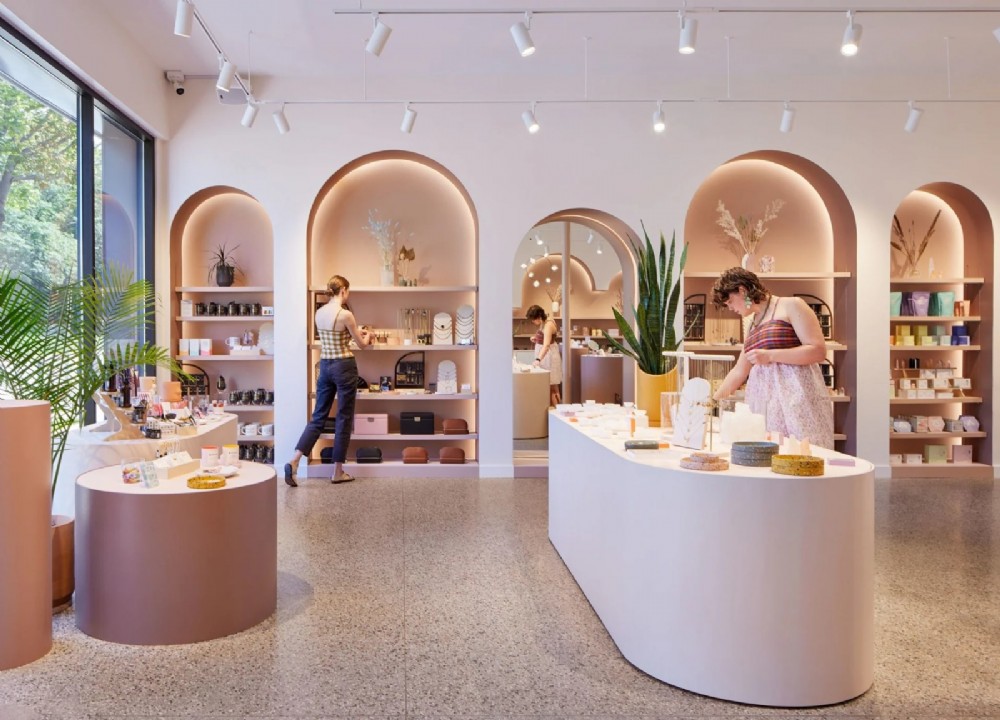Store Design: Shaping Identity and Experience

Store design is one of the most critical elements in defining the identity and atmosphere of a space. Creating a fluid and functional spatial arrangement that invites users inside is one of the primary objectives of the design. The language of the space should integrate with the brand identity and offer visitors an intuitive experience.
The relationships between volumes should be clear and fluid within a unity that spans from the floor to the ceiling. Lines that guide the user through the space should form a balanced rhythm with specific focal points. The entrance area sets the first impression of the store, so it should welcome visitors with a wide and inviting opening. Natural stone or wood cladding used here adds warmth and prestige to the space, while glass surfaces create a sense of openness and transparency.
Natural light should be supported in the interior, with artificial lighting placed to highlight the products. Linear LED strips, shelf lighting, or spotlights enhance the texture and details of the displayed products, while the light temperature used in general lighting shapes the atmosphere of the space.
Circulation areas are one of the most important elements in guiding the user through the space. Wood or micro-cement floors direct visitors along specific paths, while textural changes used in different areas (such as carpet or textile coverings in seating areas) enrich the perception of the space.
The materials used on vertical surfaces reflect the brand's identity. Natural stone, metal, or wood cladding on wall panels strengthens the aesthetic language of the space while enhancing the tactile experience. Solid wood or matte lacquered surfaces used in shelving systems bring products into focus, while metal details create a modern contrast.
Furniture should be both functional and in harmony with the overall design language of the space. Leather or velvet upholstered seating units make the customer experience comfortable, while marble or glass-surfaced display units present products in a more refined manner.
Ultimately, store design is not just an aesthetic composition; it is also an architectural narrative that guides the user experience and creates a strong connection between the brand and the visitor. Every material, every detail, enhances the value of the time spent in the space, transforming shopping into a true experience.
